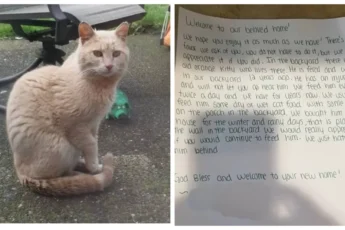Adopting a rescue pet is one of the kindest and most rewarding things you can do. You’re not just giving an animal a home — you’re offering them safety, love, and a second chance at life. But for many rescue animals, especially those who’ve experienced neglect or trauma, learning to trust again doesn’t happen overnight. Patience, consistency, and empathy are your best tools. Here’s how to gently help your new furry friend open up to you.
- 1. Create a Safe Space
- 2. Let Them Set the Pace
- 3. Speak Calmly and Consistently
- 4. Build Trust Through Routine
- 5. Positive Reinforcement Works Wonders
- 6. Respect Their Triggers
- 7. Spend Quality Time Together
- 8. Use Gentle Eye Contact
- 9. Be Patient — Progress Takes Time
- 10. Celebrate the Little Victories
- Final Thoughts
1. Create a Safe Space
When you first bring your rescue pet home, remember that everything feels unfamiliar and potentially scary. New smells, sounds, and people can be overwhelming. Set up a quiet, cozy area where your pet can retreat whenever they feel anxious — a soft bed, a blanket, and some toys are perfect. Avoid forcing interaction in the first few days. Let them come to you when they’re ready.
2. Let Them Set the Pace
Every rescue animal has a different history. Some may be shy and withdrawn, others overly cautious or defensive. The key is to respect their boundaries. Move slowly, avoid sudden gestures, and allow them to initiate contact. When they sniff your hand or lie down nearby, that’s progress — celebrate it quietly.
3. Speak Calmly and Consistently
Your tone of voice matters more than you think. Animals respond strongly to emotional cues. Talk softly, avoid yelling even when frustrated, and use the same words for commands or praise. Over time, your pet will begin to associate your voice with safety and kindness.
4. Build Trust Through Routine
Predictability creates comfort. Feed your pet at the same times every day, take walks on a schedule, and maintain consistent bedtime rituals. Routines teach rescue animals that life with you is stable — something many of them never had before. This is how you replace fear with familiarity.
5. Positive Reinforcement Works Wonders
Whether it’s a gentle pat, a soft “good job,” or a favorite treat, positive reinforcement helps build confidence. Never punish or scold a rescue pet for mistakes — it only reinforces their old fears. Rewarding calm, curious, or affectionate behavior encourages them to repeat it.
6. Respect Their Triggers
Some rescue pets are scared of men, loud noises, or even simple objects like brooms — reminders of past trauma. Observe their reactions carefully. If you notice signs of distress (tucked tail, flattened ears, trembling), stop and give them space. Over time, gentle exposure and reassurance can reduce those fears.
7. Spend Quality Time Together
Bonding doesn’t have to mean constant petting or play. Sometimes it’s simply sitting quietly in the same room, reading or working, while your pet rests nearby. These calm shared moments teach them that your presence is peaceful — not threatening.
8. Use Gentle Eye Contact
Direct eye contact can feel intimidating to animals, especially those who’ve been mistreated. Instead, blink slowly or look away occasionally. Many cats and dogs interpret slow blinking as a sign of friendliness — it’s the animal version of saying, “I trust you.”
9. Be Patient — Progress Takes Time
The transformation of a rescue pet doesn’t follow a straight line. Some days they’ll surprise you with affection; others they’ll seem distant again. Don’t take setbacks personally. Trust is built through hundreds of small, positive experiences — and your consistency is what makes them possible.
10. Celebrate the Little Victories
When your rescue pet finally curls up beside you, wags their tail, or purrs in your lap — that’s a triumph. It’s proof that love can rewrite even the hardest pasts. Every small step toward trust is a step toward healing — for both of you.
Final Thoughts
Earning the trust of a rescue pet isn’t about control — it’s about connection. It’s a slow, beautiful process of showing that love is safe and lasting. And when it finally happens, that moment when a once-fearful animal looks at you with confidence and affection, you’ll know it was worth every minute.












